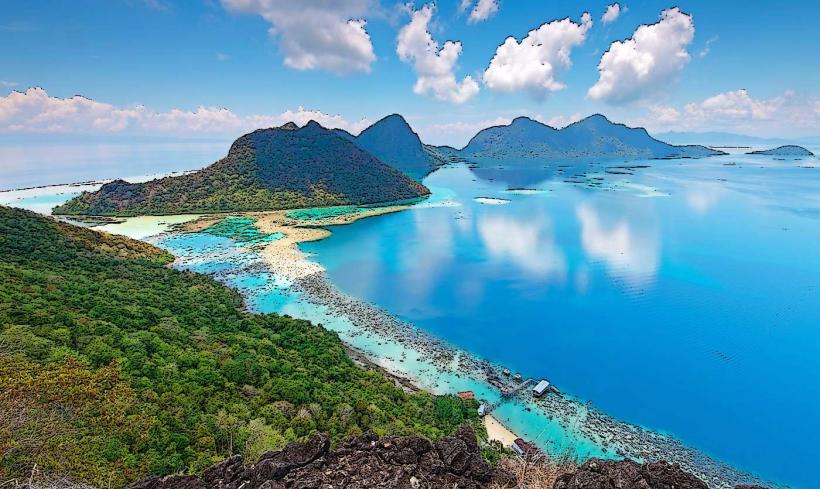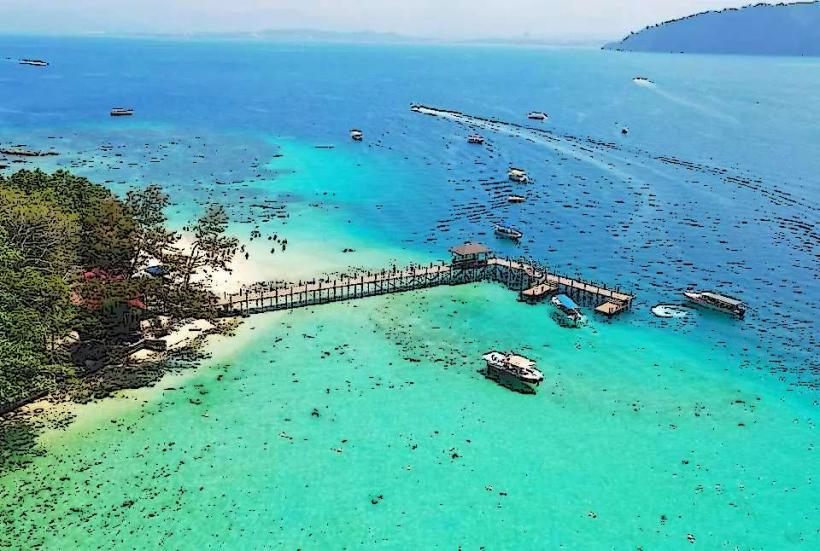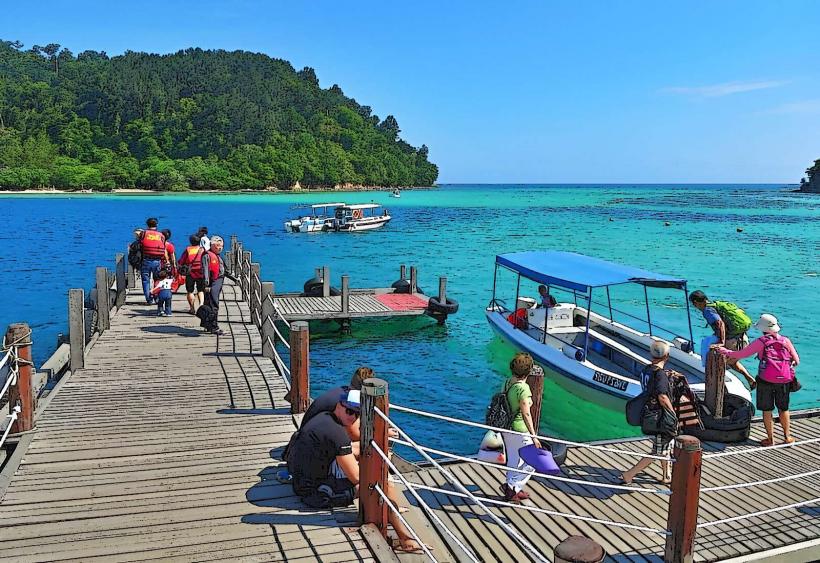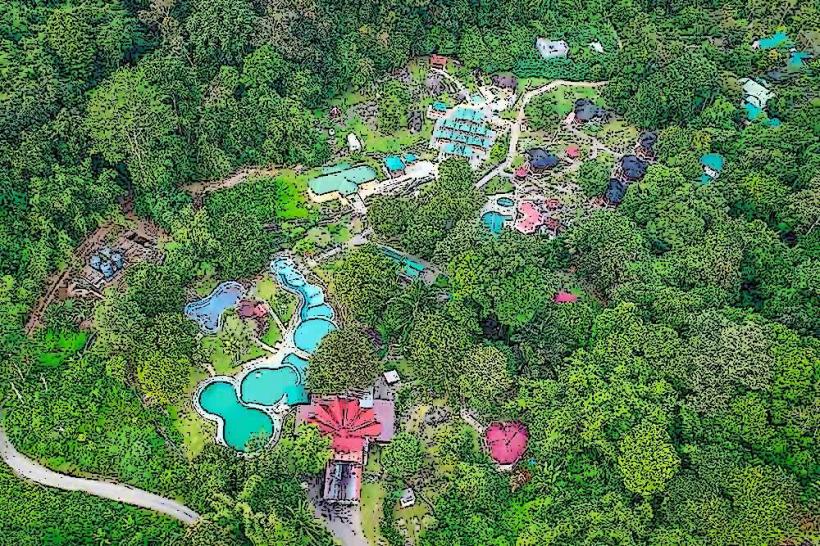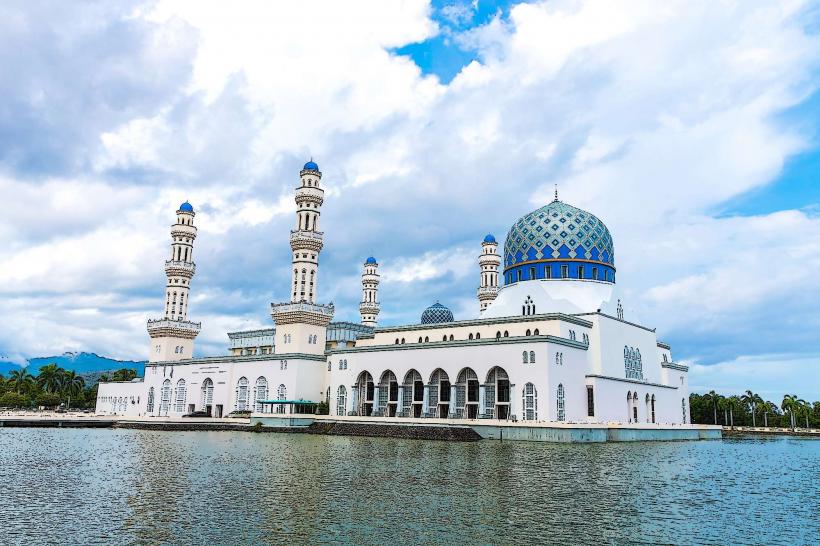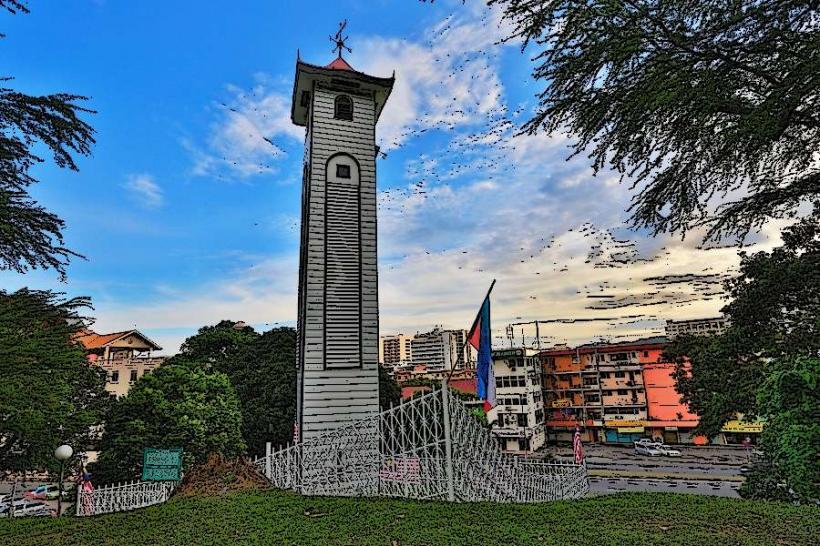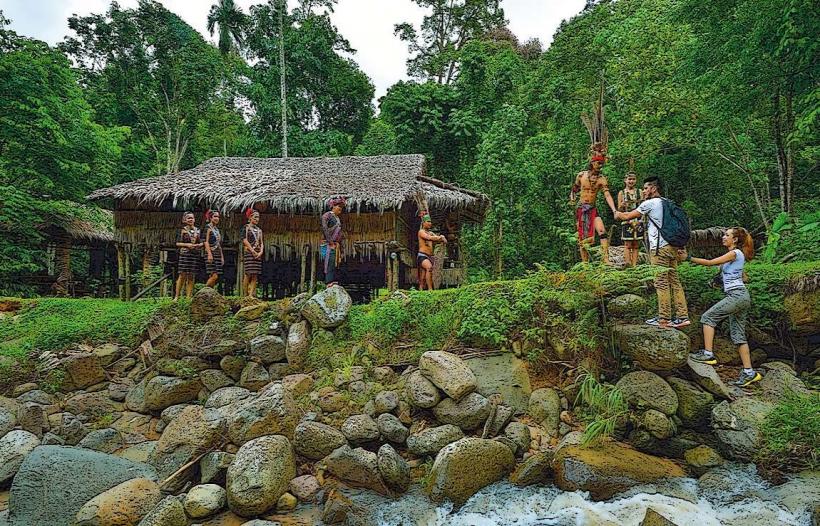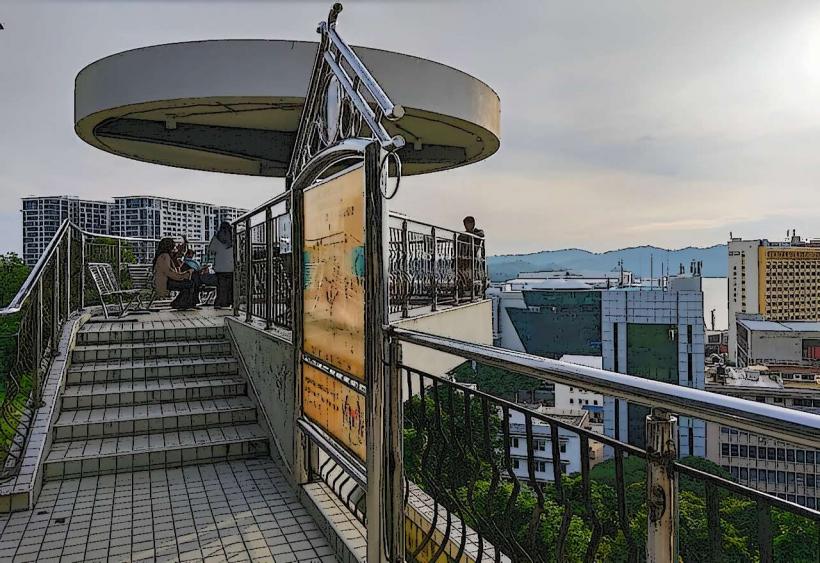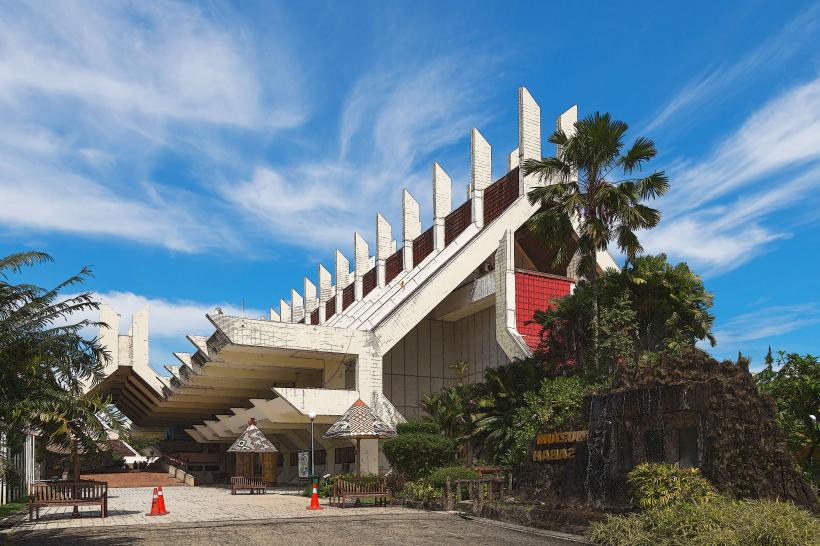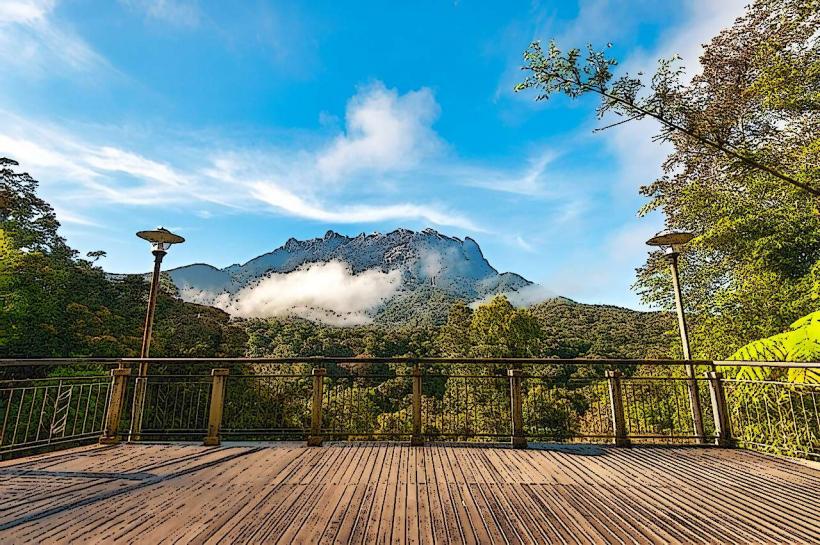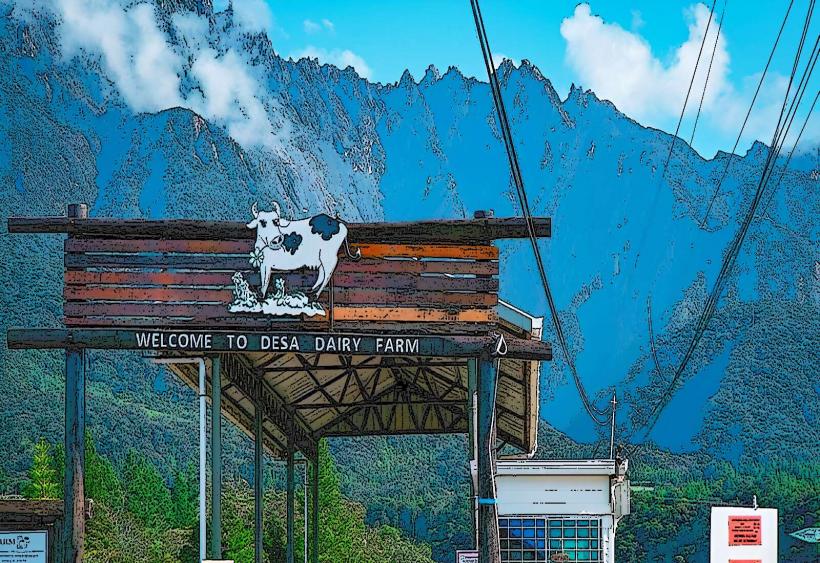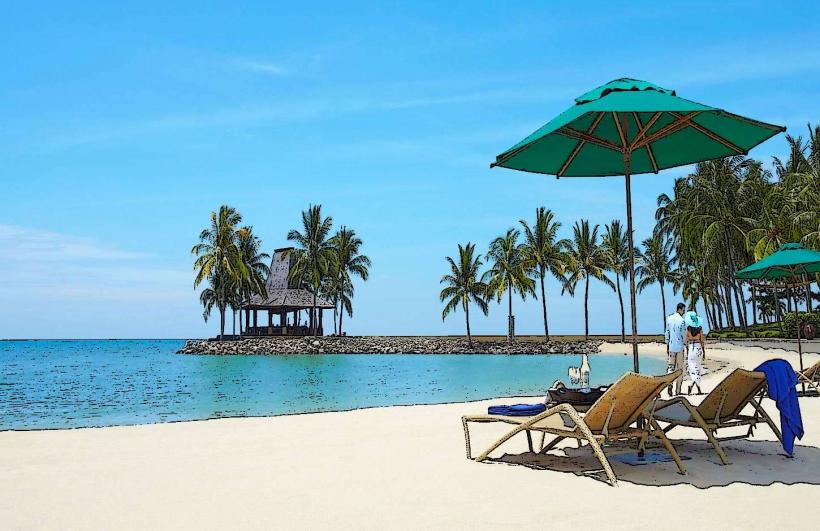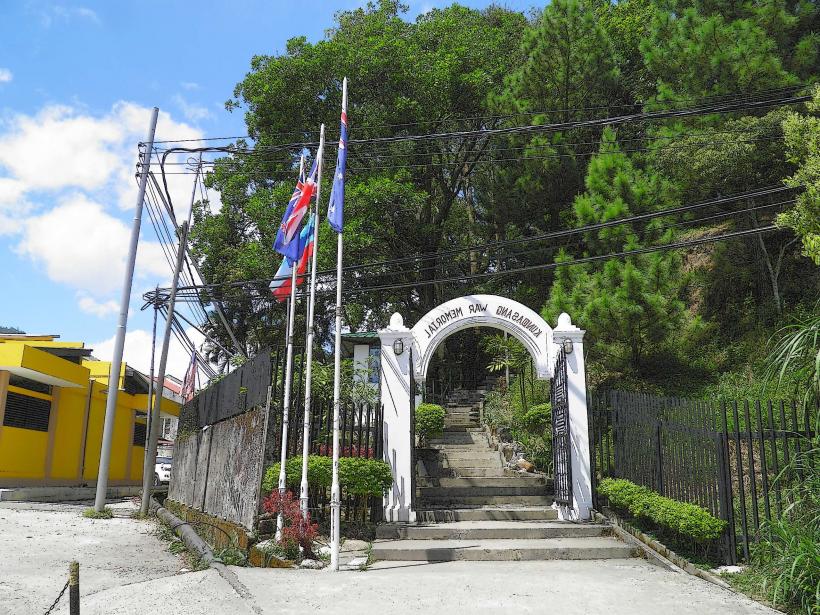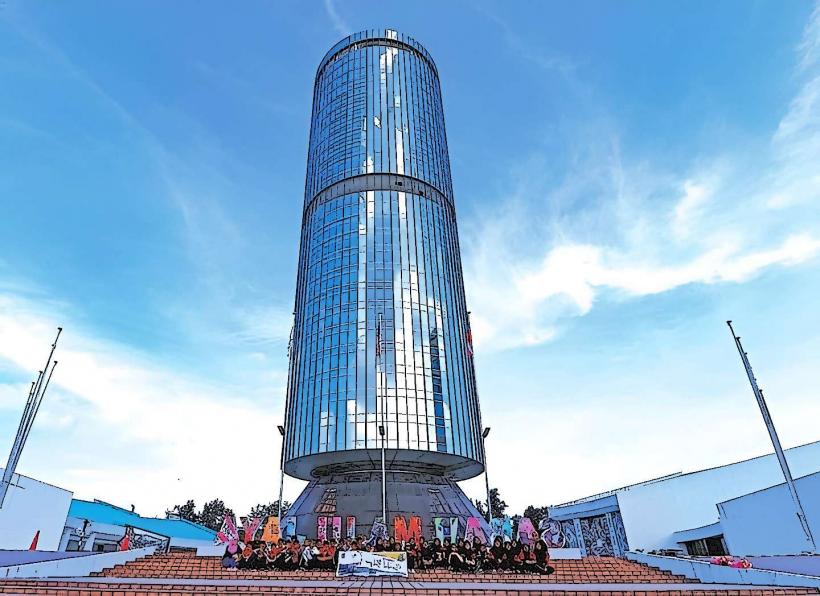Information
Landmark: Mount KinabaluCity: Kota Kinabalu
Country: Malaysia
Continent: Asia
Mount Kinabalu is the highest peak in Southeast Asia, located in the Kinabalu Park in the Malaysian state of Sabah, on the island of Borneo. It is a majestic and iconic mountain, revered for both its natural beauty and biodiversity. As a UNESCO World Heritage Site, Mount Kinabalu attracts climbers, nature lovers, and scientists alike, offering a unique experience of high-altitude ecology and diverse landscapes.
Overview
- Height: Mount Kinabalu rises to 4,095 meters (13,435 feet) above sea level, making it the tallest mountain in Malaysia and the 10th highest in Southeast Asia.
- Location: The mountain is situated in the Kinabalu Park, approximately 80 kilometers (50 miles) from the city of Kota Kinabalu, the capital of Sabah. The park itself covers an area of over 750 square kilometers and is a major conservation area for flora and fauna.
- Significance: Mount Kinabalu is not only a popular tourist destination for trekking and mountaineering but also a symbol of natural beauty and cultural importance for the people of Sabah. The mountain is considered sacred by the indigenous Kadazan-Dusun people.
Climbing Mount Kinabalu
Climbing Mount Kinabalu is a challenging but achievable adventure, drawing mountaineers from all over the world. The climb is non-technical but requires good physical fitness and determination.
Routes:
- The standard route to the summit is the Timpohon Trail, which is the most popular and frequently used trail. The route starts from the Timpohon Gate, located at 1,866 meters (6,122 feet), and takes climbers through a range of ecosystems, from montane rainforest to alpine meadows.
- Duration: The ascent typically takes two days. Climbers hike up to Laban Rata, the highest point that can be reached on the first day, where they rest overnight. The summit is usually reached early the following morning before descending.
- The total distance of the ascent is approximately 8.5 kilometers (5.3 miles), and the descent is another 6 kilometers (3.7 miles).
Difficulty:
- Although the climb is technically not difficult, it is physically demanding due to the high altitude and steep terrain. The trail to Laban Rata ascends at a steep gradient, and the final summit push to the top requires careful navigation, especially as climbers tackle the rocky and scree-covered paths near the summit.
Summit:
- The summit of Mount Kinabalu is known as Low's Peak, named after the British colonial administrator Sir Hugh Low, who was the first recorded person to reach the summit in 1851. From the summit, climbers are rewarded with breathtaking panoramic views of the surrounding area, including the South China Sea in the distance.
- The summit experience is best enjoyed during early morning when climbers can witness the magnificent sunrise.
Permits and Regulations:
- To climb Mount Kinabalu, visitors must obtain a permit from the Sabah Parks Authority, which manages the mountain and surrounding areas. The permits are issued on a first-come, first-served basis and must be booked in advance due to the limited number of climbers allowed each day (typically 135 climbers).
- Climbers must also be accompanied by a certified guide, which is mandatory for safety reasons.
Best Time to Climb:
- The ideal time to climb Mount Kinabalu is during the dry season, typically from March to August. The weather is generally more stable, and climbers can avoid the heavy rains that occur during the monsoon season (November to February).
- However, even during the dry season, temperatures at the summit can drop below freezing, so climbers need to be prepared for cold conditions.
Biodiversity
Mount Kinabalu is a biodiversity hotspot, with a rich variety of plants, animals, and ecosystems that change as the altitude increases. The mountain is home to some of the world's most unique species, including:
- Flora: The lower slopes of the mountain are covered with lush tropical rainforest, while the higher altitudes have alpine meadows with unique plant species like the Kinabalu Orchid (found only on the mountain), Nepenthes (pitcher plants), and Rhododendrons.
- Fauna: The mountain is home to several endemic species of wildlife, including the Kinabalu Giant Earthworm (the world's largest earthworm), Kinabalu Clouded Leopard, Mount Kinabalu Shrew, and a variety of birds such as the Mountain Serpent Eagle and Kinabalu Pitta.
- Conservation: Kinabalu Park is a UNESCO World Heritage Site due to its exceptional biodiversity. It has been designated as an important area for conservation and research.
Kinabalu Park
Kinabalu Park, where the mountain is located, is a UNESCO-listed site and a popular destination for eco-tourism and nature-based activities. The park encompasses a wide range of habitats, from tropical lowland rainforest to alpine meadows, and is home to over 5,000 species of plants, 326 species of birds, and more than 100 mammal species.
Attractions in Kinabalu Park:
- Poring Hot Springs: Located in the foothills of Mount Kinabalu, this natural hot spring area is a popular spot for relaxation after a strenuous climb. Visitors can soak in the hot springs or enjoy a walk along the canopy walkway, which offers views of the rainforest from above.
- Botanical Garden: The garden within Kinabalu Park showcases the rich flora of the region and offers guided tours for visitors interested in learning more about the plant species found in the park.
Visitor Centers:
- The Kinabalu Park Headquarters is located near the base of the mountain and offers information about the park’s flora, fauna, and conservation efforts. Visitors can stop by for maps, advice, and other resources before embarking on the climb.
Climate and Weather
The weather on Mount Kinabalu can vary significantly with altitude:
- Base Camp: At lower altitudes (1,800 meters), the climate is typically warm and humid, with temperatures ranging from 20°C to 30°C (68°F to 86°F).
- Higher Altitudes: As climbers ascend, temperatures drop. At Laban Rata, around 3,000 meters, temperatures can fall to 5°C to 15°C (41°F to 59°F), and the summit can experience freezing temperatures with strong winds.
Cultural Significance
- Sacred Mountain: For the Kadazan-Dusun and other indigenous groups of Sabah, Mount Kinabalu is a sacred site. According to local beliefs, the spirits of their ancestors reside in the mountain, and climbing it is considered an important cultural and spiritual journey.
- Traditions and Ceremonies: Various ceremonies and rituals are held to honor the mountain, and local customs emphasize respect for the natural environment.
Conclusion
Mount Kinabalu is one of the most celebrated natural landmarks in Southeast Asia, attracting climbers, nature lovers, and those interested in cultural experiences. Its combination of stunning vistas, unique biodiversity, and spiritual significance makes it a must-visit destination for anyone traveling to Sabah or the island of Borneo. Whether you are planning to climb the peak, explore the surrounding Kinabalu Park, or simply enjoy the beauty of the region, Mount Kinabalu offers an unforgettable adventure.

